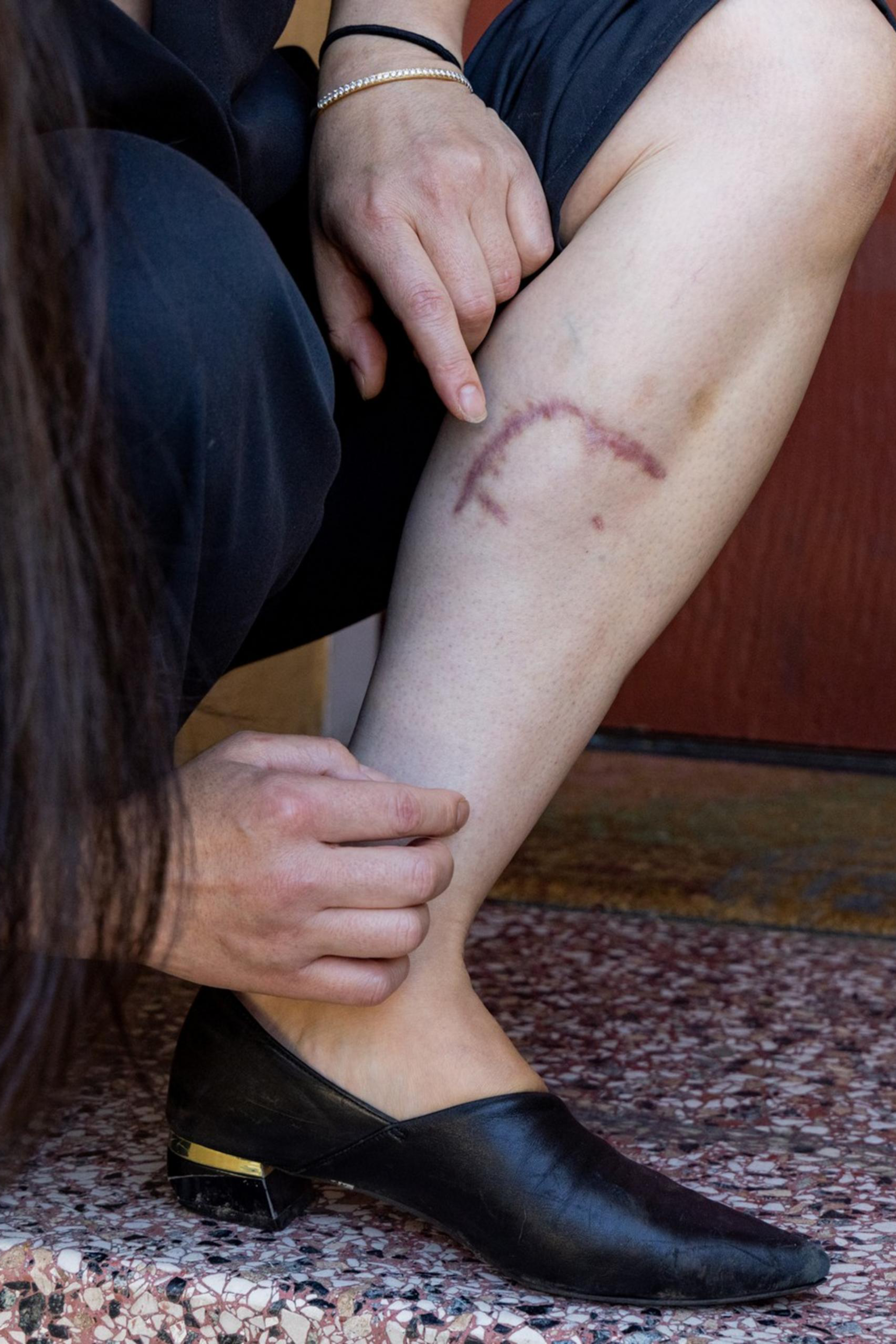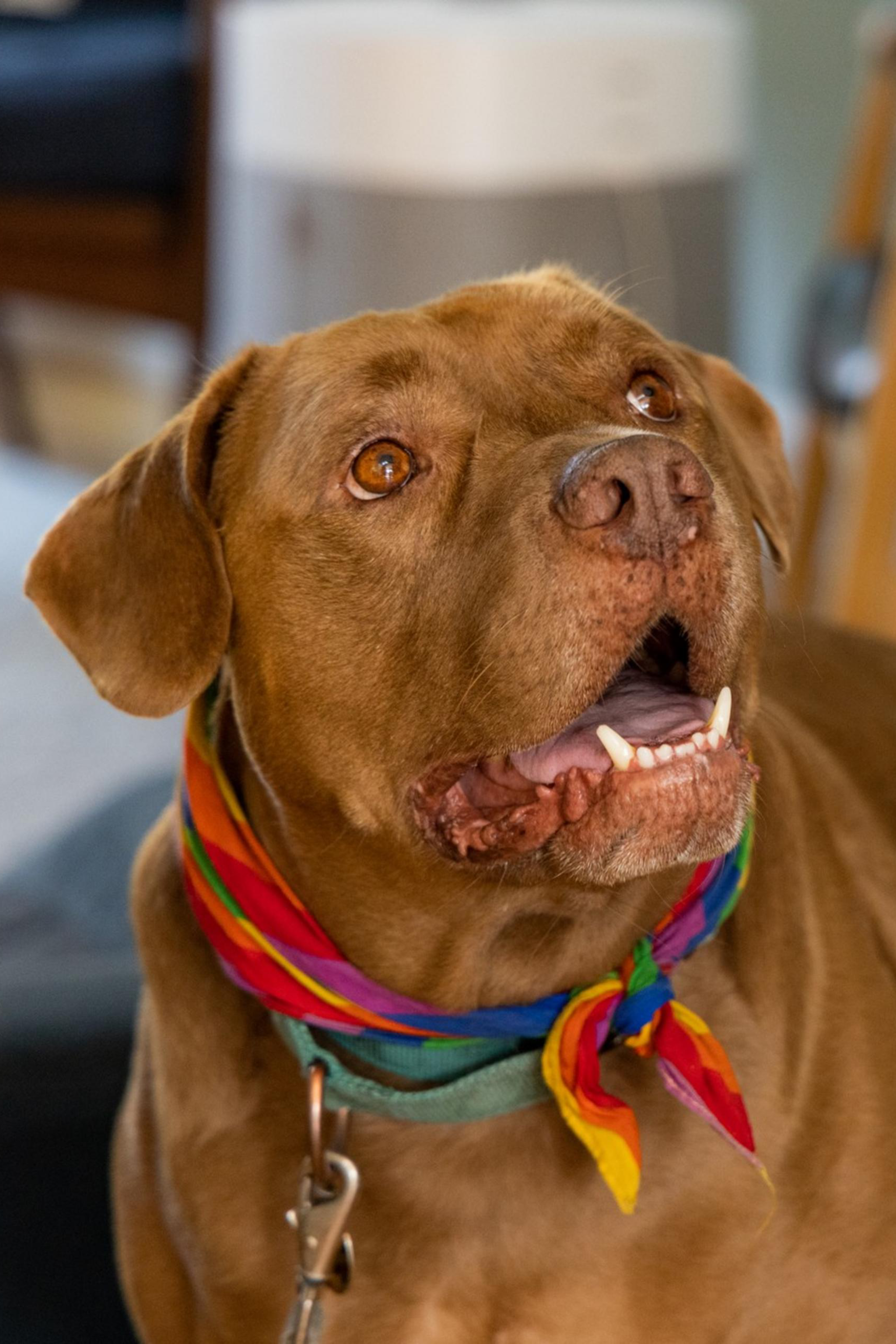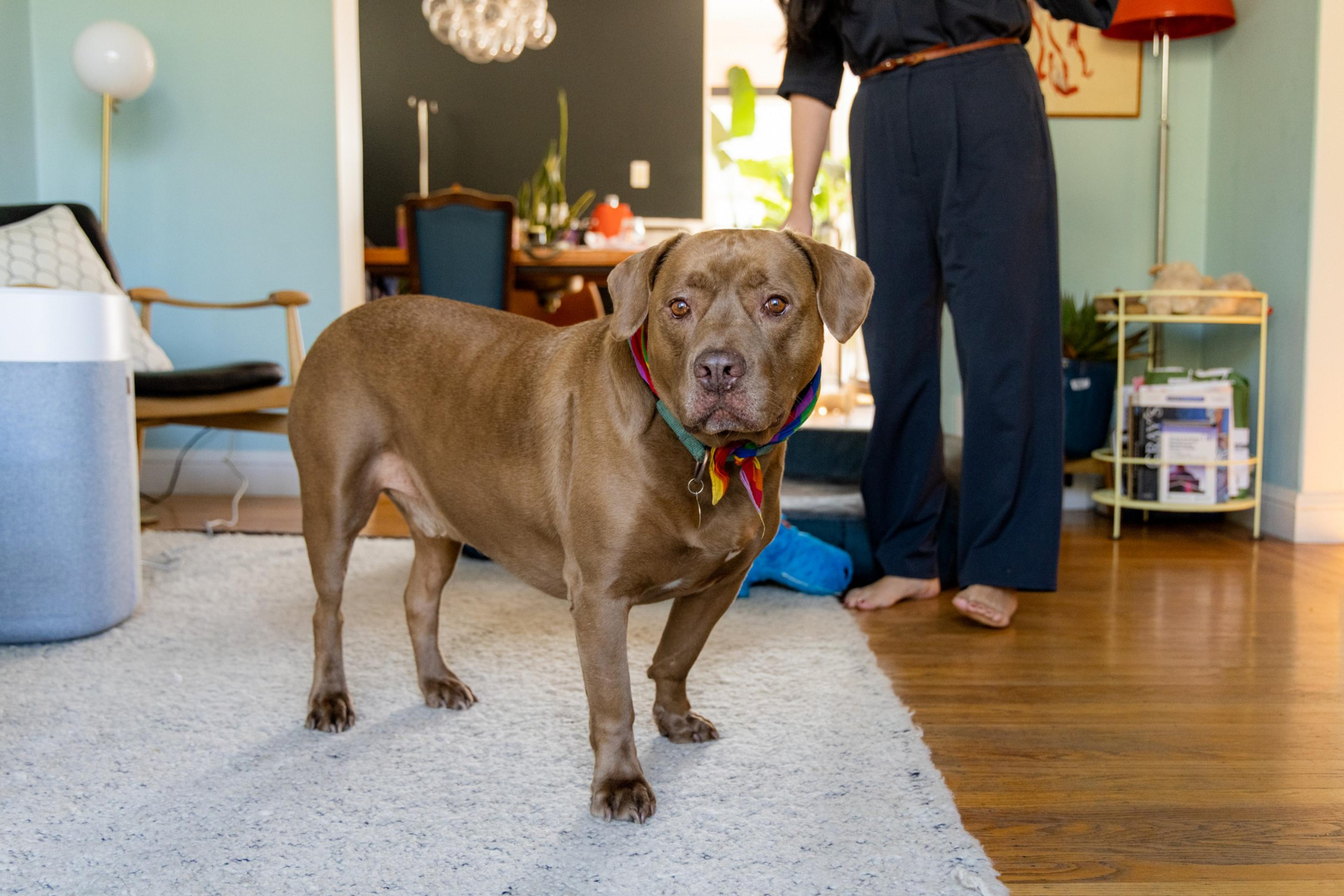Yuko Murakami upended her entire routine after an ambush by an unleashed rottweiler left her hospitalized for nearly a week and her pit bull Buck fearful of other dogs.
Murakami, a UCSF nurse anesthetist, spent six days in the hospital and $12,000 on out-of-pocket medical bills to stitch up her torn calf and surgically treat an infection from the bite on her hand. She spent another $1,000 — and counting — on a dog behaviorist to learn how to manage her now-skittish canine companion.
It took months after the mauling last fall in Potrero Hill for Murakami to venture out alone with Buck again. Dog parks are now out. Off-leash isn’t an option. Busy streets are an obstacle course of triggers for Buck, a 70-pound rescue whose newly anxious disposition — if unaddressed — could render him as dangerous as the dog who attacked them.
“I still get nervous when I see other dogs off-leash,” Murakami said, “or with owners distracted on the phone.”
It could have been worse, she reflects. At least she and Buck survived. At least the police responded quickly. At least she saw some semblance of justice in San Francisco’s canine court, which sentenced the attacker, a serial biter named Koda, to doggy death row.
But in a city with more than 18,600 humans per square mile and limited animal control resources despite a post-pandemic surge in bites, navigating the world as an attack victim with a traumatized dog requires incessant vigilance.
“That’s a scar I could never heal for him,” Murakami said. “I can overcome, but he can’t. And now his world is a lot smaller.”


What hath dog wrought?
Dogs in the U.S. are biting, mauling, and even killing more than ever.
Deadly canine attacks more than doubled over the past decade, according to the Centers for Disease Control and Prevention, from 40 a year to 100. In 2022, dog bites resulted in nearly 49,000 emergency room visits in California, a 70% jump from 2005, according to the state Department of Health Care Access and Information.
In few places is the danger more pronounced than in dense cities like San Francisco, where yards are a luxury, off-leash citations are rare, and the question of how to curb canine aggression turns neighbor against neighbor.
The Standard combed through hundreds of documents obtained through a public-records request to see what’s driving the worst of these encounters and what local authorities do — or don’t do — to manage negligent owners and vicious dogs.
What emerges is a picture of a city that’s at once a paradise for pet lovers, a minefield for attack victims, and a sensory assault for breeds with genetic proclivities that make urban life stressful.
The pet-adoption boom since lonely pandemic times has only amplified tensions by making dog-human interactions more frequent, while the city’s 13 Animal Care and Control field officers and the San Francisco Police Department’s one-cop Vicious and Dangerous Dog Unit struggle to keep up.
Dog trainers attribute the uptick in attacks and bite-and-runs — a misdemeanor in the city proper — in part to a wave of first-time owners struggling to handle their animals.
“The shelters were all clear for a hot minute — remember that?” said Frances Hurley, who worked with city dogs for the better part of a decade before launching Finding Balance Dog Training in 2018. “There was this huge demand for specific breeds, too, so we also saw a lot more dogs from puppy mills that don’t really breed for temperament.”
While a pet population boom may be less of a problem in places with more room to roam, San Francisco has the second-most-concentrated population in the U.S., behind New York City. “That means you’re going to run into more people, you’re going to run into more dogs,” Hurley said.
Another issue driving the resurgence of canine aggression is the fact that many pets in San Francisco simply aren’t cut out for city life.
“If we’re talking about dogs, generally, that struggle in busy urban environments,” she said, “you’d look at dogs bred for herding or the ones bred to be stimulated by a lot of movement, like border collies, cattle dogs, or any of the guardian dogs that are instinctively territorial, or hunting dogs that have high-prey drive.”
The cars, bikes, crowds, and cacophony of city life can overwhelm dogs with naturally heightened senses, causing them to lash out. But as attacks approach pre-pandemic heights, fewer aggressive dogs are having their day in San Francisco’s canine court.


From office space to open space
Just as endemic to city living and just as maddening for many breeds are confined spaces like apartments and offices, which can turn otherwise docile dogs neurotic.
In early 2022, a senior designer at a local tech firm brought his 80-pound Akita, Koji, to work because the dog coped with separation anxiety by ransacking the house, he said. But keeping Koji pent-up at a downtown high-rise didn’t bring out the best in him either.
On Koji’s second day in the office, he chased after a woman, chomping so deep into her thigh that she spent three days in the hospital for a wound that required five stitches and caused lasting nerve damage.
San Francisco’s dog court deemed the bite severe enough to merit a last-resort sentence for Koji: death or banishment from the city forever.
The city’s vast outlay of trails, meadows, and beaches aren’t exactly safe havens either.
Since a 2019 court ruling deemed federal lands beyond the jurisdiction (opens in new tab) of local animal control, attacks in some of the most popular dog destinations — Fort Funston, Crissy Field — don’t get tried in San Francisco.
Then there’s the city’s intractable homelessness, which features in many of the narratives that make their way to dog court. Records show numerous incidents when homeless dogs act out because they’re overwhelmed by sleeping rough or untreated ailments.
In 2020, a young pit bull named Sniper was ruled vicious for biting his owner, an unhoused man who said he didn’t blame the dog because it was suffering from a bladder infection.
There can also be utility to canine aggression; records show that some attacks are perpetrated by dogs trying to protect their unhoused guardians.
In early 2019, the city deemed a gray pit bull named Dorje dangerous after he bit someone who stepped outside to take out recycling. Dorje, who was off-leash, attacked the victim for several minutes and bit him in the ear, which required six stitches. The dog’s owner, a homeless man, was sleeping nearby, which led an officer who presided over the hearing on the matter to surmise that Dorje was “put in a situation that he felt frightened and might need to protect” his owner.
The city ordered the guardian to never leave Dorje unattended. But three years later, the dog assailed a security guard trying to administer Narcan to Dorje’s owner, who was passed out on a computer in San Francisco’s main library by City Hall.
The attack left the guard with puncture wounds on both hands, nerve damage, torn meniscus and rotator cuffs, a shoulder injury, and detached quadricep muscles. When the case came up in dog court in 2022, he tuned in from the hospital to hear the verdict: Dorje was too dangerous to live.
Many, if not most owners, have the resources, urgency, and awareness to accommodate their pets’ bespoke triggers. But the few who don’t are endangering smaller dogs and other people — in the worst cases, children.


More bites, less enforcement?
Joey DeHaven was taking out the trash at his Pine Street apartment when 8-year-old Ajaxx, a pug-mini pinscher mix, made a break for it. DeHaven didn’t notice the dog was gone until he heard desperate yelps from the main lobby.
In emotional testimony at an Aug. 6 hearing, DeHaven recounted how he ran downstairs and scooped up his shrieking 10-pound dog to get him away from a neighbor’s white husky-lab mix, Max.
After whisking Ajaxx back to his flat, DeHaven realized the dog was bitten. “It ripped his skin up, so much so that his skin was torn up from his neck,” he said, fighting back tears.
DeHaven filed a bite report through animal control and never knew what came of it. The next time he heard an update about Max was in the headlines, after the dog attacked a 3-year-old boy in the Marina, leaving bite marks on the arm that required five stitches.
Apparently it wasn’t enough that DeHaven reported the first bite. If he had requested a dangerous dog hearing, an official could have handed down an order to muzzle Max or sentence him to obedience training. But no one explained that to DeHaven at the time.
When ABC7 news pressed (opens in new tab) Animal Care and Control Director Virginia Donahue on the matter this summer, she insisted that the instructions on the agency’s website are clear.
What’s not clear from the website is how the city’s canine criminal justice bureaucracy involves at least a few agencies that don’t necessarily investigate every bite and don’t necessarily summon a hearing unless a citizen knows enough to expressly request one.
Perhaps in no small part because of that confusion, fewer dog attacks are getting adjudicated.
As documented bites rose from 590 in 2020 to 760 last year, dog hearings fell from 159 to 37, city data show. Twenty-six hearings were held in the first eight months of this year, including the one for Max in early August that resulted in a euthanasia order this past week. No dog hearings were scheduled when The Standard last checked days ago.
The slowdown comes as the Department of Police Accountability demands more funding to run the hearings, which it has done since a 2018 civil grand jury report (opens in new tab) found problems with SFPD’s purview.
In a letter to city leaders a few months ago, DPA chief Paul Henderson said his office is too busy policing the police to keep up with canine court without additional help.
Because the existing setup is “generally working well,” Henderson told The Standard, the mayor’s office is figuring out how to relieve some of the burden for the watchdog agency.
But while justice may be delayed, he said it’s not being denied.
